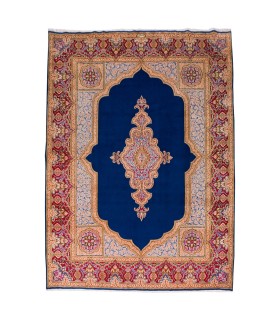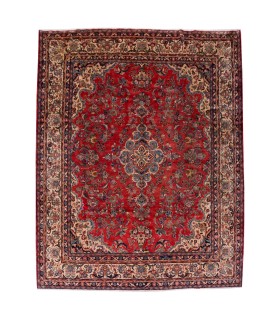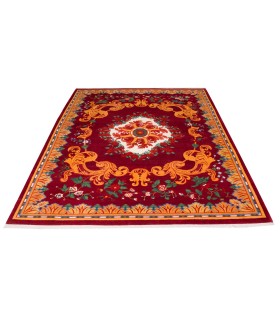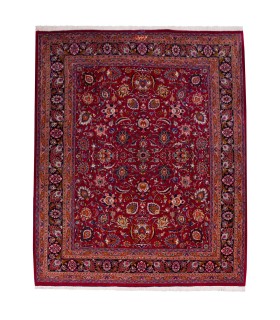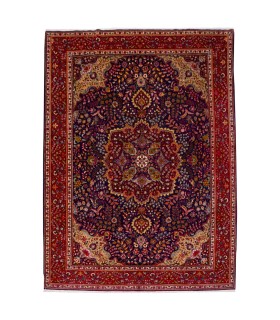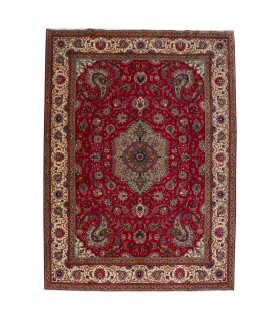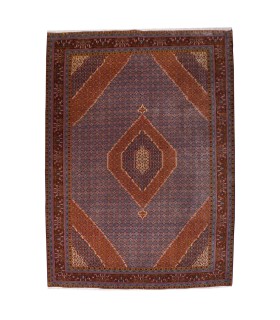This beautiful carpet is from Heriz. Heriz is a city in East Azerbaijan in northwest Iran, northeast of Tabriz. Heriz rugs are produced in the village of the same name in the slopes of Mount Sabalan. Heriz carpets are durable and hard-wearing and they can last for generations. Part of the reason for the toughness of Heriz carpets is that Mount Sabalan sits on a major deposit of copper. Traces of copper in the drinking water of sheep produces high quality wool that is far more resilient than wool from other areas. Heriz rug weavers often make them in geometric, bold patterns with a large medallion dominating the field. The typical Heriz red, highly individual medallion and geometrical design are the main characteristics of these popular carpets.
This carpet made by handspun wool. Handspun and machine-spun wool have different properties that crucially affect how a rug looks. Handspun wool yarn is irregular in the tension of its twist; it is inadvertently spun looser in some places and tighter in others. One practical effect of this irregularity is that, when soaked in dye, handspun yarn absorbs less where it is spun tightly and more where it is spun loosely. Without perhaps meaning to, the spinners have created yarn that, when dyed, is never uniform in color.
Shah-Abbasi design is based on a floral pattern, which has been popular since Safavid period although the sacred pomegranate blossoms of Zoroastrians are its source of inspiration. Its abstract floral designs combined with Arabesque designs comprise the main pattern and the margin of these carpets. There are several variations of the Shah Abbas design like the Sheikh Safi, the Floral and the Animal designs.
Dying method of material of this carpet was traditional and all dyes which used were natural dyes. Colors of natural dyes are softer and more natural looking and longer lasting than their synthetic counterparts. Sometimes natural dyes contribute to Abrash. Since all-natural dyes are not chemically or synthetically based or fixed, no two dye lots can ever be exactly the same.
Some examples of natural dyes are:
Plant Dyes: saffron, Isparuk, oak apples etc. for yellow colors; indigo for blue; madder roots (depending on age) for various red tones, as well as henna leaves and flowers, etc.
Animal Dyes: the most important of these is cochineal and in earlier times, Indian lac, both obtained from insects. A purple dye obtained from snails was Important in ancient times.
Mineral Dyes: Karaboja for black - also iron oxide; iron sulphate for brown; copper sulphate for green, etc.
In addition, however, colors will vary with the wool quality, e.g., its fat content, as well as with the chemical composition of the water which is used for preparing the dye baths.
Data sheet
- Type
- Town/Village
- Origin
- Heriz
- City
- Heris
- Dimension (cm)
- 238 × 171 (7/81 × 5/61)
- Area (Square metre)
- 4.07
- Material
- Wool (Cotton Foundation)
- Handspun Wool
- Yes
- Dyes
- Natural / Vegetable dyes
- Layout
- All-Over
- Design
- Shah-Abbasi
- Border Color
- Beige(S) / Ivory(S)
- Approx. Pile Height (cm)
- Approx. 2 cm
- Shape
- Rectangular
- Approx. Weight (kg)
- 16




























